This article includes NO affiliate links; Just links to manufacturers or links of where to buy. I’m not sponsored by any of the brands in this article.
An issue I have with a number of other Websites is they will seemingly recommend inferior products with the sole intention to monetize your visit to their website.
Unlike other websites, I actually own a number of these smokers including all other equipment I review.
Jump to Sections of this Article:
1. Charcoal Smokers; Weber Kettle, SNS, Drums, Water Smokers, etc.
In my opinion, the Weber Kettle is the first Grill/Smoker that every person who is remotely interested in BBQ should purchase.
The first model I used was so old that it didn’t have what I’d deem “newer” features like the heat deflector on the handle, the thermometer on the lid, or the tuck-away lid holder.
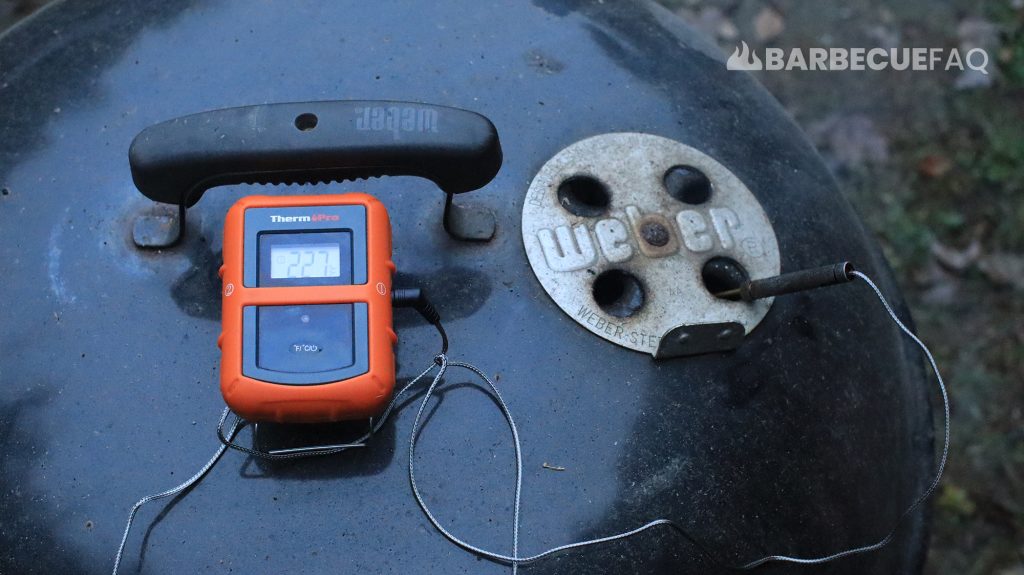
While those features would certainly be great to have, it just goes to show how long the Weber kettle can and will last.
Through the strategic placement of charcoal, the Weber kettle can be transformed into a smoker.
This is done via the arrangement of charcoal:

The short of it is – You’re taking unlit charcoal, in the form of either lump or briquettes, and placing them inside the kettle.
You’re then taking a few hot coals and placing them on or around the other coals.
The lit coals will light the unlit charcoal over-time as well as the wood chunks. The result is a fire that will last several hours (5+) while maintaining 225-275F.
Are there Brands Besides Weber?
Absolutely.
For the money though, Weber is one of the most affordable brands out there; There’s a reason they’ve been around forever.
A good example is Slow N’ Sear (SNS).
SNS is famous for their add-on they created for kettle grills (like the Weber kettle) in order to make smoking easier.
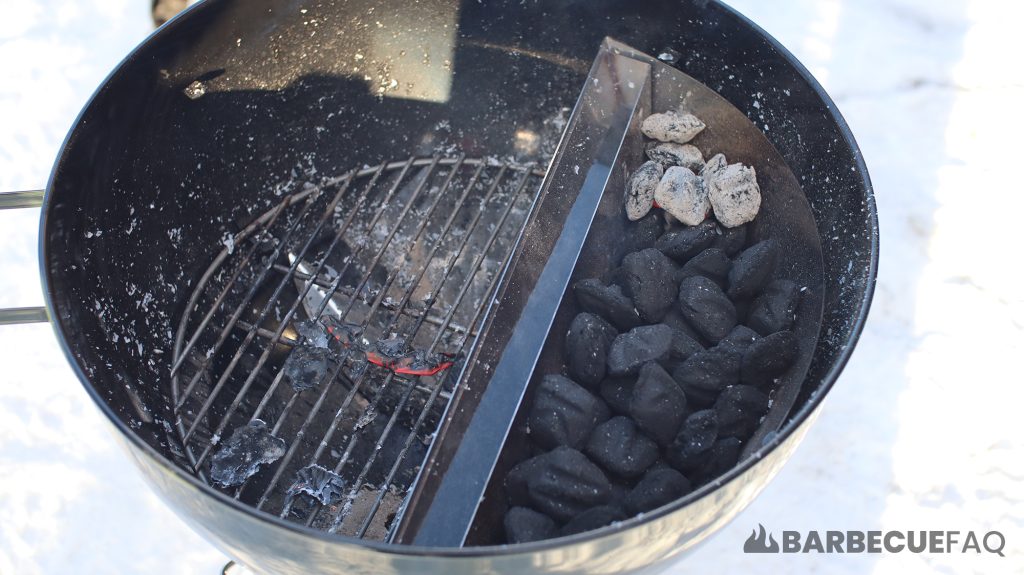
The SNS drops into the kettle and features a “trough” where you place your unlit charcoal.
Apart from this add-on, SNS started to manufacturer kettle grills in 2020.
Their kettle grill is roughly $100 more and it includes a few features the Weber lacks.
For example:
- Side shelf (left or right handed) – Weber’s Performer series has a side shelf.
- Smoke hole – You could drill one.
- Probe port – You could drill one.
- Strategic placement of lid thermometer – You can add your own.
What About Non-Kettles?
Of the brands that exist, the most popular are:
- Pit Barrel Cooker (PBC)
- Gateway Drum Smokers
PBC is more so beginner friendly and certainly more affordable.
I have an entire article where I reviewed the PBC – You can read my review here.
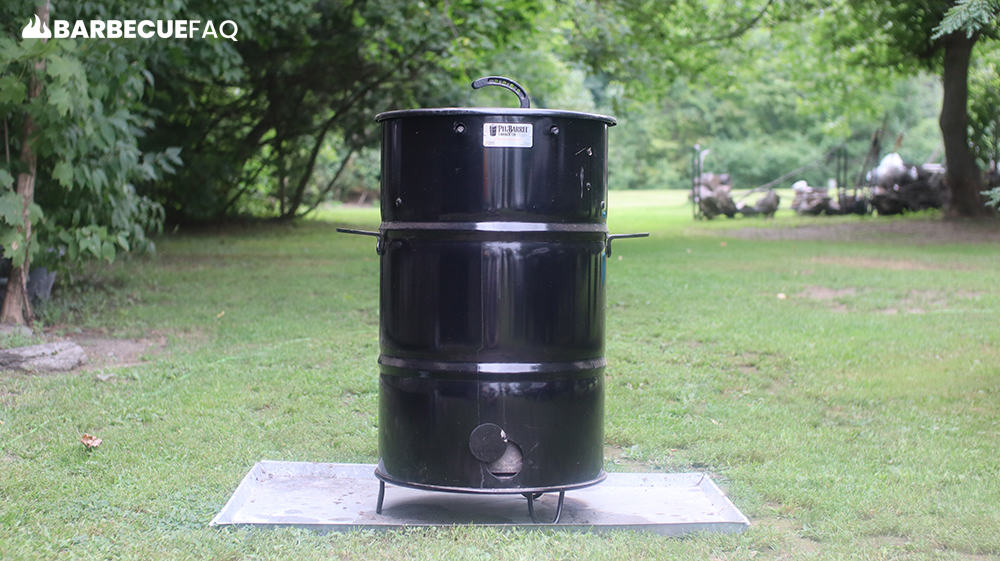
Barrel Cookers work great if you’re into “Hot and Fast” smoking – so above 300F.
I also think this style of cooking is WAY less forgiving as you can easily burn your food – for instance, sugar based rubs can tend to burn with hot and fast cooks and most beginners don’t realize that.
I think pork and beef ribs come out great and so does chicken, but I’m not a huge fan of brisket on the PBC, it’s just not as good as low and slow.
There’s also water smokers like the Weber Smokey Mountain (WSM) also called “Bullet Smokers.”
These smokers are so popular they even have entire forums dedicated to them.
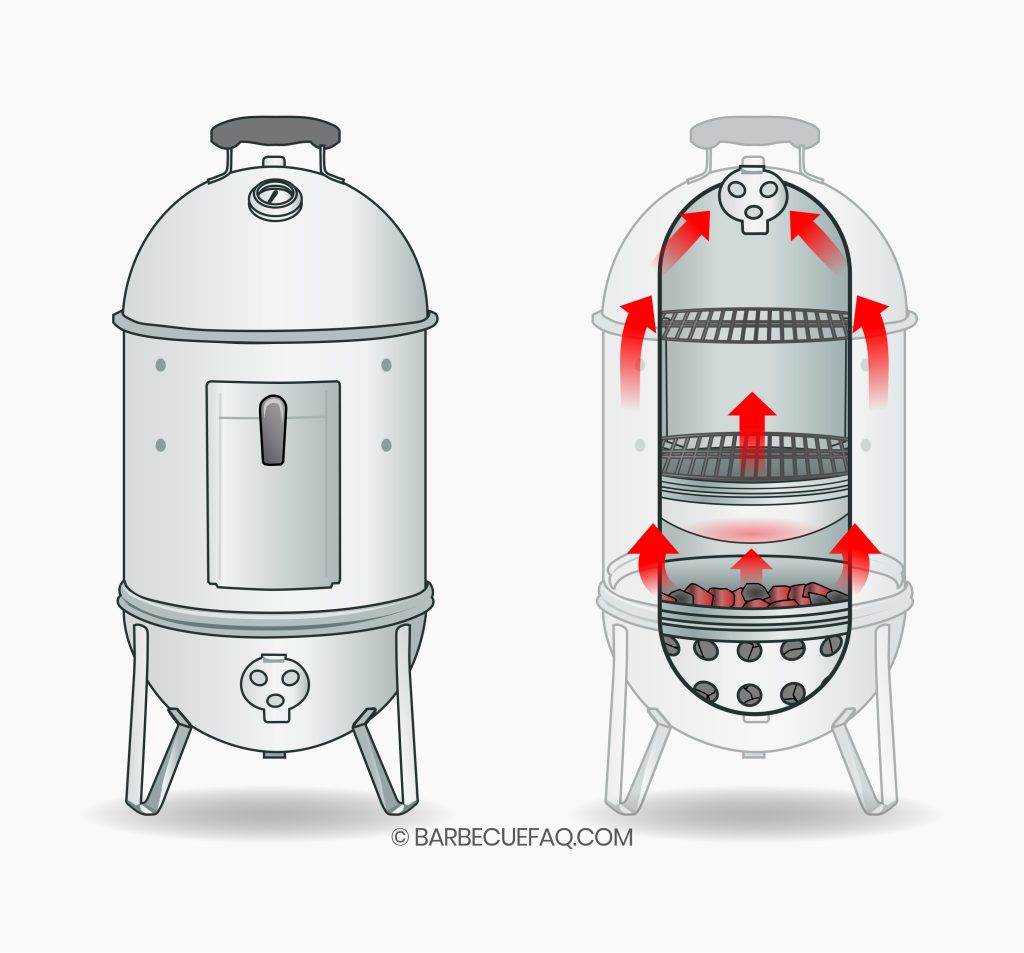
Harry Soo from Slap Your Daddy BBQ is someone who regularly mentions the WSM as he uses it for competition brisket.
To quote Harry Soo:
- Overall inexpensive to purchase
- Lasts forever
- and “really, really works” – He’s won an excess of 100+ first place finishes on the 18″ WSM.
I still think of all these though, the Weber Kettle is by far the more value buy.
I also didn’t list Kamado-style grills because they cost a TON. They range in price from $500-2000+ and most lean towards the end of the spectrum.
Brands to Research:
2. Pellet Smokers like Grilla Grills, Camp Chef, Traeger, etc.
My current Pellet grill/smoker is the Grilla Grills Silverbac – You can read my full review here.
Pellet smokers work similarly to a kitchen oven – they’re thermostatically controlled.
Meaning, you plug it into an outlet, set/dial a temperature on the grill, and the smoker cooks the food – about as beginner friendly as it gets.
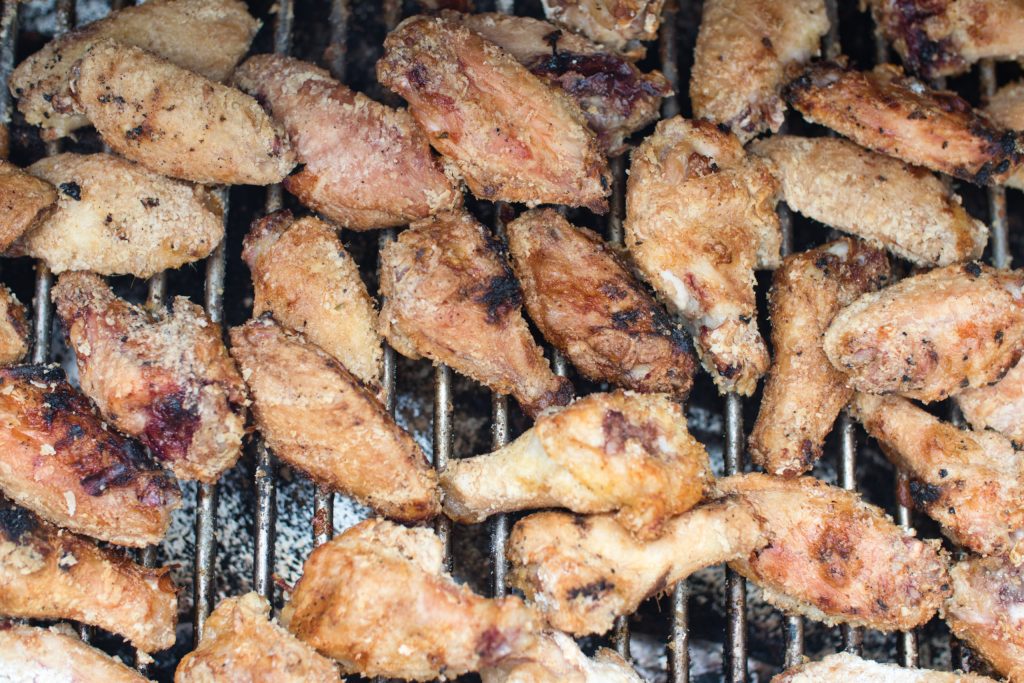
Heat is generated by “food-grade” pellets made of hardwood that generate smoke for your food.
The first pellet grill I bought was a Camp Chef – the model is so old they no longer make it.
Several brands now exist:
- Traeger
- Z-Grills
- Camp Chef
- Louisiana Grills
- Grilla Grills
- Pitts and Spitts
- Fast Eddy’s by Cookshack
- Pit Boss
- Rec Tec
- Yoder
- Green Mountain Grills
While these grills used to be somewhat affordable (around the price of a gas grill), A LOT of them are pricing themselves out of range for “beginners.”
As a beginner, all you should care about are things like:
- Good Materials (like stainless and heavy gauge steel)
- PID and Non-PID modes
- Strong Warranty
PID and Non-PID are just ways to adjust the feed rate of the auger.
- PID is more precise, dumps less pellets, meaning less smoke.
- Non-PID is less precise, dumps more pellets, meaning more smoke.
I’d also temper your expectations in terms of “smoke flavor.”
Pellet smokers burn very efficiently, and unless you get a model that’s engineered to introduce wood chunks close to the firepot (like Camp Chef or Pitts and Spitts), it’s not nearly as good as a charcoal smoker.
In 2024 I still think for the money, Grilla Grills offers the best for mid-range pellet smokers.
Compare their materials, warranty, modes, features, etc. to ALL the brands above beginner to mid-range models and none of them hold a torch.
3. Electric Smokers like MES, Charbroil, Bradley, etc.
The first smoker I ever purchased with my own money was an electric smoker – back when I was roughly 13 years old.
Since then I’ve bought 2 more:
- MES 40″ in 2018
- MES 30″ in 2024
My main goal back then was to smoke beef jerky as well as a few other meats – like ribs – and I knew that an electric smoker was about as beginner friendly as possible.
And, it was.
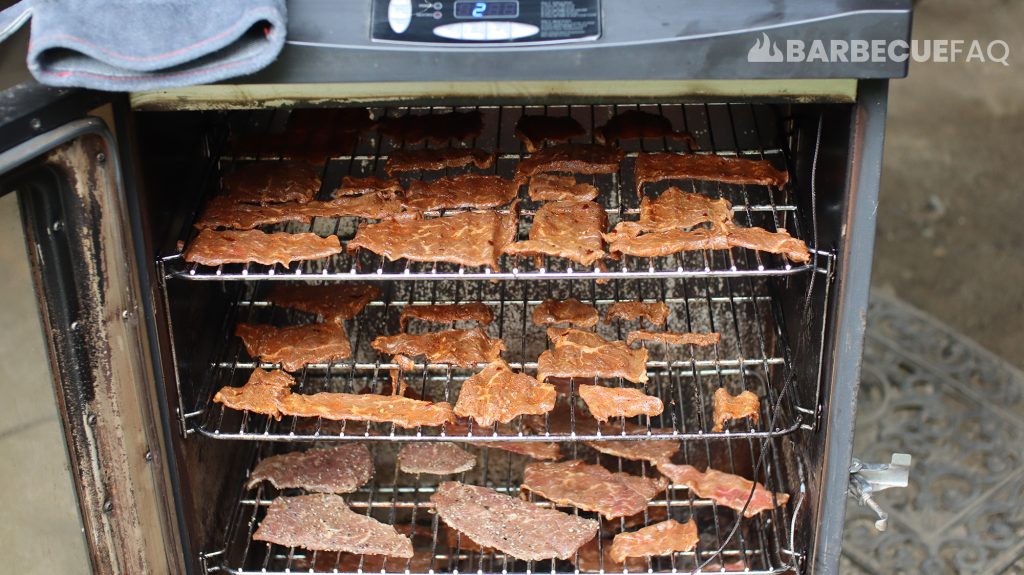
You press like 2 buttons and add wood chips via the “loader” and wait for your food to finish.
About as easy as it gets.
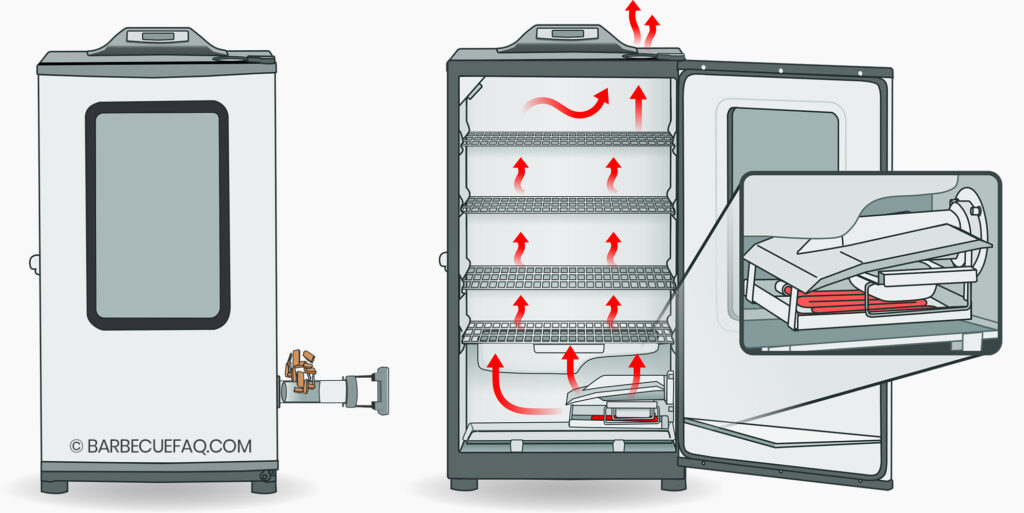
A big advantage of electric smokers is their ability to maintain super low temperatures which a lot of other types of smokers struggle with.
For example:
- Cold smoking cheese is basically impossible on any other smoker
- Smoking beef jerky without case hardening the meat
- Smoking fish without leaking tons of albumin
Without the use of an add-on like the A-MAZE-N (AMNPS) you won’t be able to achieve low, consistent temperatures like that – ever.
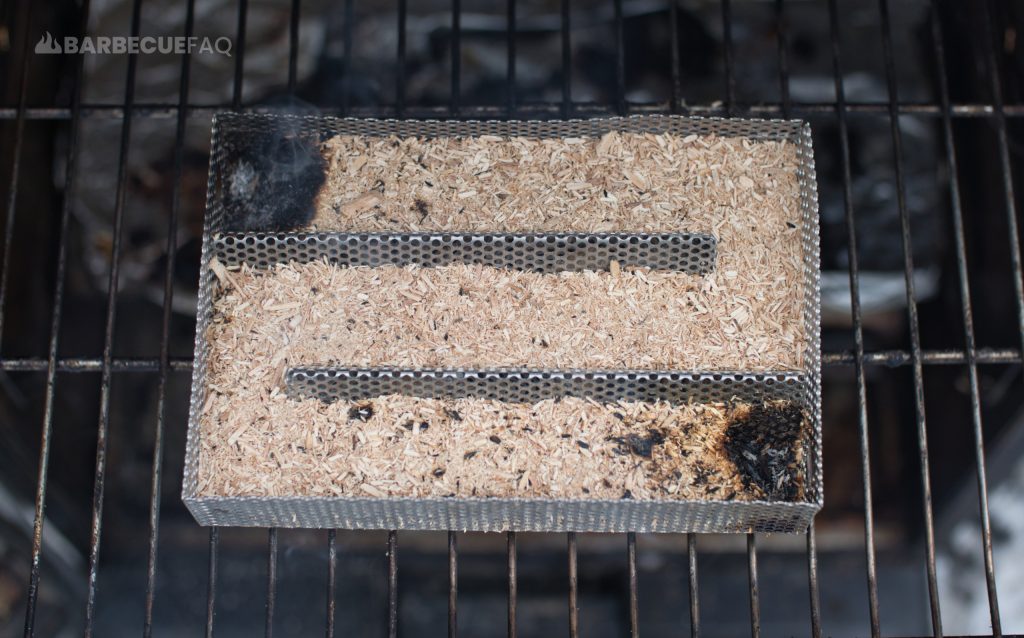
Even though I own tons of smokers now, I still use my Electric smoker TONS.
- I use it to finish ALL my meats after I smoke them on my kettle. Charcoal is expensive and electricity is cheap. When you go to wrap, the meat won’t take on smoke, it just needs heat.
- I cold smoke Cheese in the Winter in my electric smoker.
- All fish is smoked in it
- I use it to hold BBQ meats overnight at a food safe temperature
The “smoke flavor” is really mild though and if you care about things like “smoke ring” they won’t make a worthwhile one because the wood smolders at a low temperature.
They’re one of the most affordable options; Most range from $150 – $300 and will last a long time.
More often than not the part that fails first is the heating element (also fairly inexpensive to replace if need be).


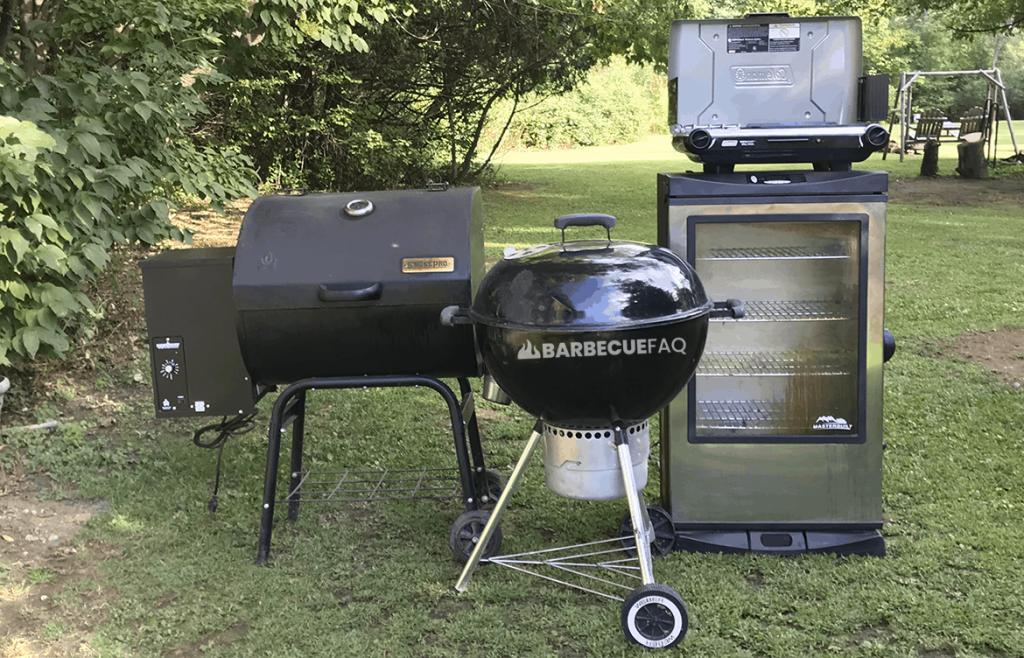
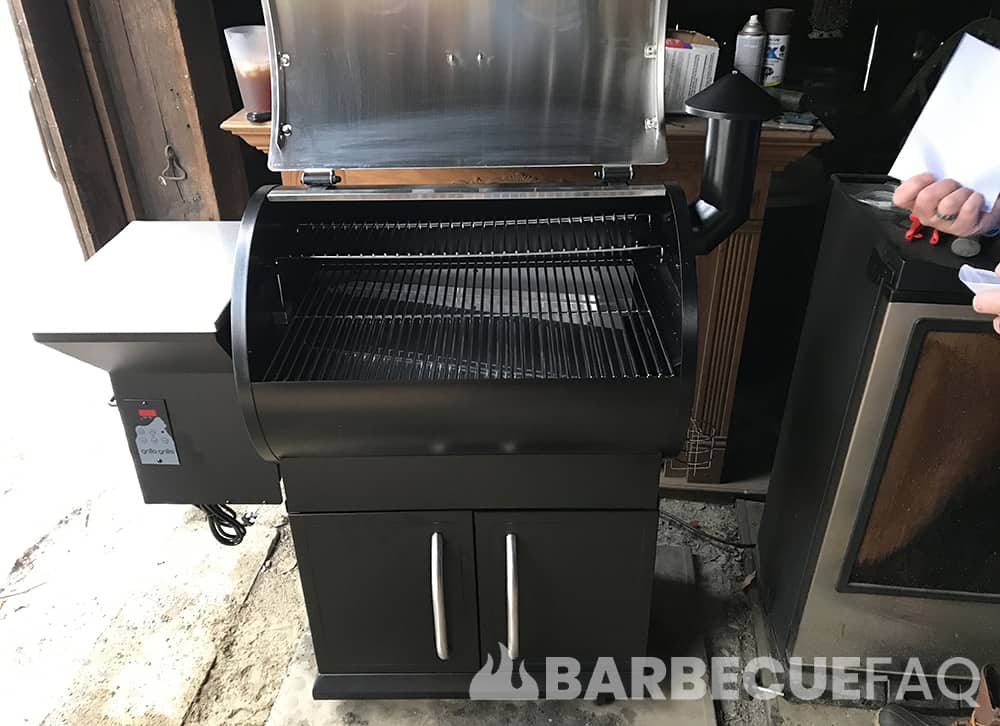
4 comments
Michelle Mitchell
This was an excellent source of information. Thank you! I have been researching to get my husband a smoker for Father’s Day. I learned everything I need to know.
Dylan Clay
I appreciate your kind words Michelle!
-Dylan
Bill lambie
Great explanation on smoking/bbq methods and units available.
Dylan Clay
Thanks for the comment Bill and I’m happy to help!
Comments are closed.